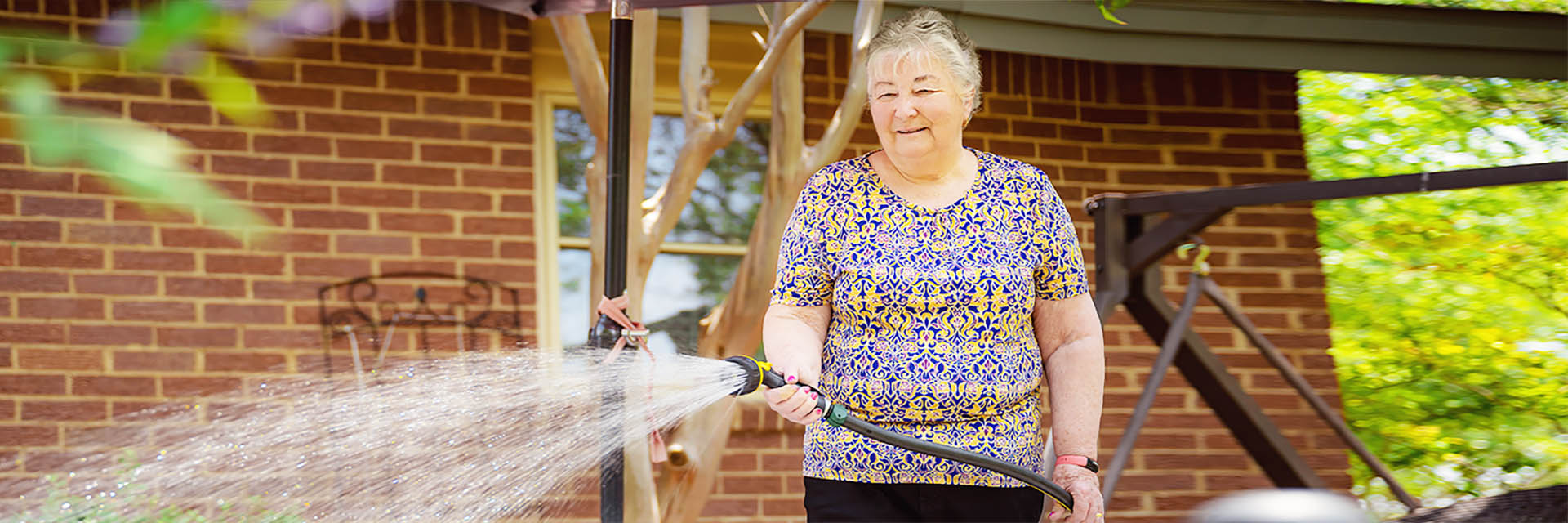Pat Bach may be retired and in her 70s, but that doesn’t keep her from leading an active life. She and her husband go camping every month. She likes to walk and has hiked most of our country’s national parks.
Throughout her many travels, Pat was able to somehow manage her ongoing back pain. Until she suffered a fall several years ago.
That’s when the pain began interfering with her daily routine, as well as her ability to go exploring. She couldn’t stand for more than 10 minutes. Washing dishes at the sink became a chore. She even had to start sitting while she brushed her teeth.
“You don’t realize how bad it is until it’s so bad that you’re like, ‘Okay you’ve got to do something,’” Pat admits.
She tried conservative measures like physical therapy, using a walker and getting injections through a pain management specialist, but the relief was only temporary. Then she sought the help of Adrian Harvey, D.O., a spine surgeon on the medical staff at Texas Health Harris Methodist Hospital Fort Worth.
Although Pat’s earlier courses of treatment hadn’t gotten rid of her pain, Harvey was able to use the treatment history to figure out the source of her pain and better know how to treat it.
“Pat had sacroiliac joint disfunction,” Harvey explains. “In other words, an inflammation or damage to a joint where the tailbone is connected to the hip bone. It’s that joint right there. It was severely inflamed. It was so bad that it was essentially bone-on-bone and there was nothing helping that joint to move. So severely painful for her.”
The sacroiliac joints serve to absorb shock between the upper body and the pelvis and legs. Sacroiliac (SI) joint dysfunction usually occurs just on one side of the body and is a common cause of low back pain that can radiate into the hip and leg, as was the case for Pat. It can be difficult to diagnosis SI joint dysfunction because its symptoms often mimic those of other back problems, such as disc herniation.
The solution, in Pat’s case, was a minimally invasive fusion surgery to stabilize and strengthen her damaged SI joint. Three small implants were placed across the joint to help promote healing. “Ultimately, bone will fill in there and the joint will fuse together; it helps [the joint] so it doesn’t move and doesn’t cause pain,” according to Harvey.
Unlike some other back surgeries, Pat’s spinal fusion required no follow-up physical therapy and minimal downtime. Six weeks after her surgery, she was pain-free and back to doing the things she loves.
As for Texas Health Fort Worth, Pat says she would highly recommend the hospital. “They are just incredibly welcoming. Everybody from the check in downstairs to going up to where the surgical unit was.”
“The advantage of Texas Health Fort Worth is that is a very large hospital,” Harvey explains. “It is the flagship hospital in Fort Worth for [Texas Health]. We can handle surgeries that are fairly simple, like sacroiliac fusion, all the way up to complex surgical procedures.”
Pat is grateful to get back to walking, gardening and, of course, camping. “I can brush my teeth without sitting down; that’s huge,” she says. “Being pain-free, there’s no hesitation to get up and go do something. … It’s truly wonderful. Definitely a new lease on life!”
Want to know how back pain may be affecting your life? Take the Back Health Assessment or visit YourBackHealth.com for more information.
Ready to schedule an appointment? Find a back and spine specialist on the medical staff near you.

